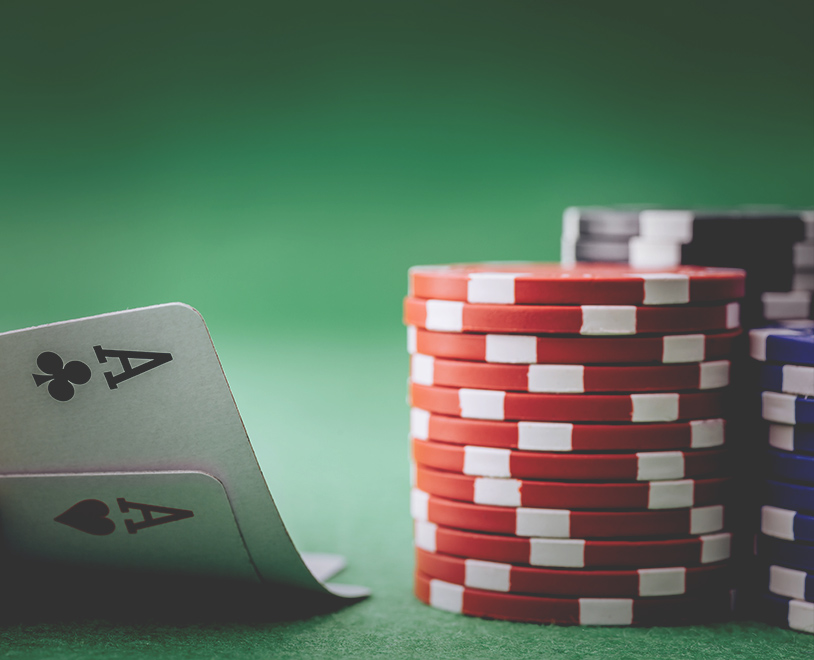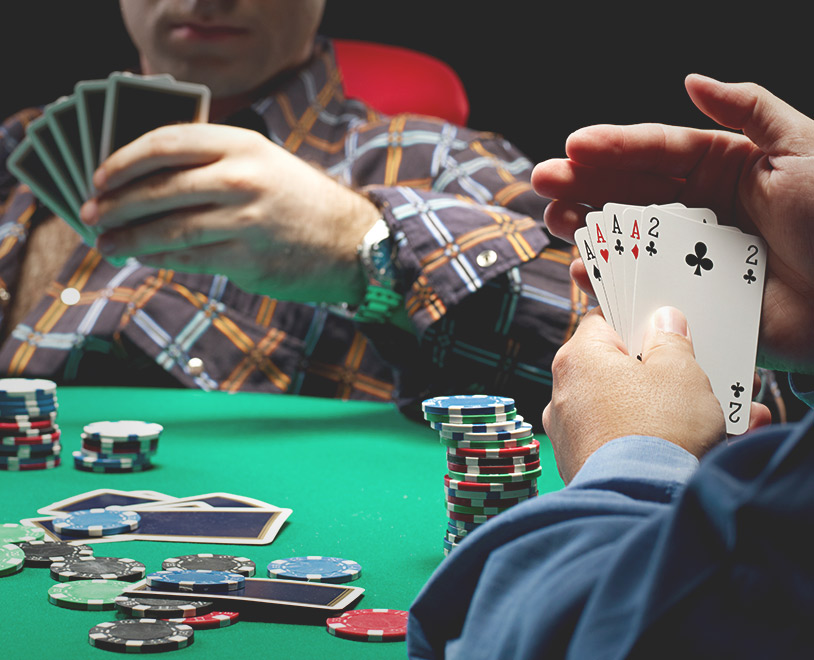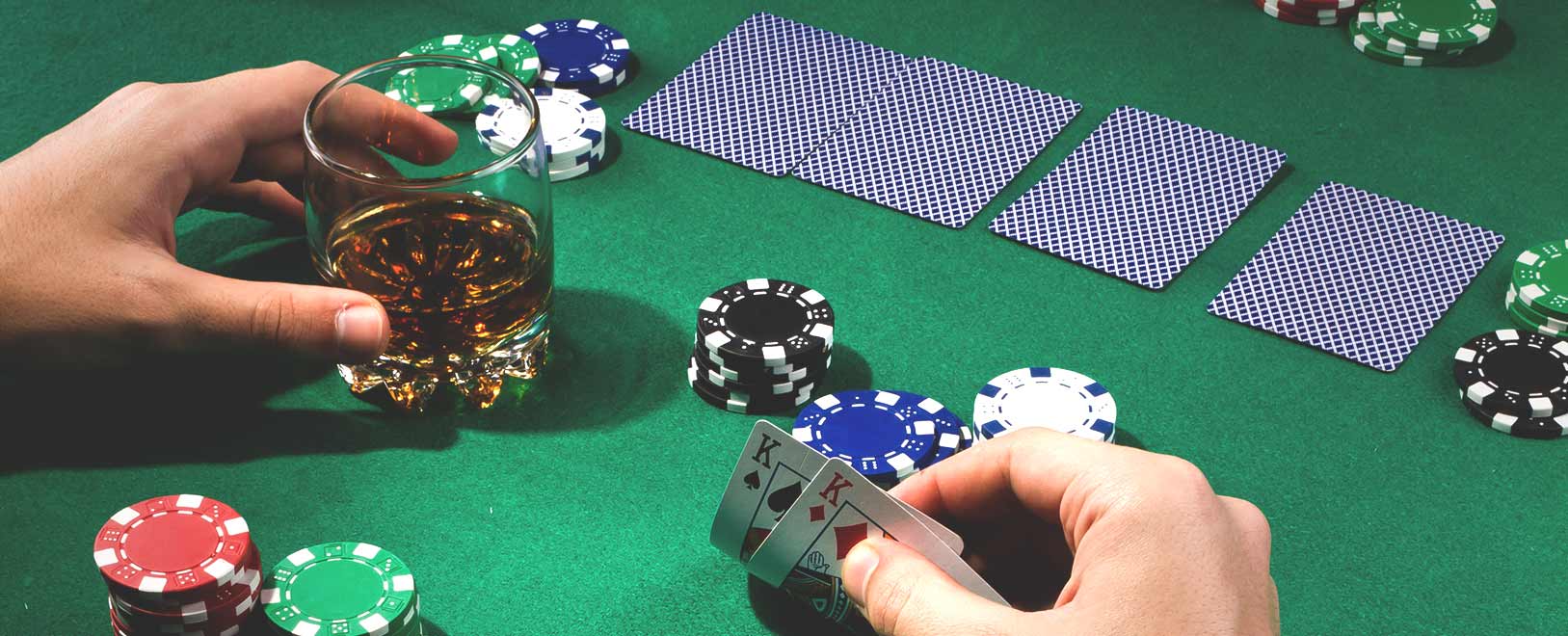When you see the poker pros make big bluffs on TV or in the movies, it looks cool, right? But they’re not doing it to be cool. The best players aren’t just randomly picking hands and going crazy with them, trying to get the other guy to fold their hand. Instead, they’re making calculated decisions and picking the best times to run their bluffs. In the art of bluffing, timing and situation are everything. After reading this article, you will know how to bluff in online poker like a seasoned pro. We’ll tell you what to think about before deciding to go ahead with a bluff. Nobody can tell you exactly when to bluff; however, you should understand the factors that make for a good bluffing situation for yourself going forward in the game. That includes the best cards for bluffing in online poker, and the best opponents to bluff. We’ll even tell you about the extra advantage that bluffing gives you – even when you get caught.

What is a Poker Bluff?
Before you can learn to bluff in online poker, we need to define what we mean by “bluffing” in the first place. At its most basic level, a bluff is an aggressive play – either betting or raising – that’s made with a hand which you believe to be inferior to your opponent’s. This is in contrast to a value bet, which is made with a hand you believe is superior. You usually want your opponent to call (or raise) when you make a value bet. When you bluff, you usually want them to fold.
These days, more advanced poker players find themselves shying away from making this bluff/value bet distinction. There are times when you’ll make a thin value bet, and be perfectly content if your opponent folds their hand; on the flip side, there are times when you’ll run a bluff and actually have the best hand. But dividing your bets into value and bluff categories is still useful for building a sound poker strategy.

How to Bluff in Online Poker
Bluffing Is All About Timing
When it comes to strategies for bluffing online poker players, it’s good to start with a balanced approach. As a rule, when you’re the player in position, you’ll want to bet/raise with a certain number of your bad hands, as well as most of your good hands, and you’ll want to check back the stuff in between. How many bluffs you mix in with your value bets will depend on the size of your bet/raise; the fewer chips you put in, the less often you should bluff, since your opponent is more likely to call.
Playing a balanced range of bluffs and value bets out of position is a little trickier. When you’re in position, there’s no such thing as check-raising, since the betting round ends when you check back; however, when you’re out of position, there will be times when you’ll start your bluff with a check, hoping your opponent will see it as a sign of weakness and try to take the pot down with a thin value bet. Then you can raise your opponent out of their shoes and get them to fold.
Other times, you’ll be out of position and start your bluff by leading out. There are subtle differences between leading and check-raising in this situation; either way, when you’re learning how to bluff in online poker, you’ll want to focus at first on bluffing when you’re the aggressor in position. And you’ll want to do it only when the time is right. In theory, a balanced strategy would tell you to bluff a third of the time when you make a pot-size bet on the river, but that doesn’t mean randomly bluffing a third of your hands – it means bluffing the best third possible.
To do that, you’ll need to take your hole cards into consideration when playing a game. When you’re bluffing on the flop, turn or river (we don’t usually “bluff” pre-flop, since recommended starting ranges are linear in strength rather than polarized between value bets and bluffs), it’s better to do it with hands that contain blockers to value hands that your opponent might be holding. For example, if there are three Hearts on the board, and you’ve only got the Ace of Hearts in your hand, you know your opponent can’t possibly have the nut Flush in their hands. An aggressive play here might get your opponent to fold a weaker flush, especially when you’re playing Omaha.
There’s also been a lot of discussions lately about unblocking your opponents. When you bluff, you want your opponent to fold, so it’s better if you don’t have any cards that might be in your opponent’s folding range. Let’s say you’re playing Texas Hold’em, you’ve fired both the flop and turn with a Flush draw in Hearts, and the river is a brick. You could bluff your busted flush draw, but the fact that you have two Hearts in your hand makes it that less likely your opponent also has a missed draw that they’re going to fold. The timing just isn’t right for a bluff here.
Consider Future Equity
When you learn to bluff when playing online poker, you’ll eventually come across the concept of semi-bluffing. This is when you bluff with a hand that’s second-best right now, but could become a big made hand later on as you navigate the streets. Maybe you’re on the button holding a lousy Six-Three in Hold’em, and the flop is Ace-Seven-Four. You might be able to bluff away your opponent who called in the blinds since they probably don’t have an Ace (or they would have raised pre-flop); even if they call, you still have a gutshot, and you’ll make a Straight if a Five comes on the turn.
That’s the power of equity. Good strategies for bluffing when playing online poker, players will focus on bluffing with higher-equity hands as opposed to complete air, so that your bluffs don’t always have to succeed in generating folds. There will still be occasions now and then to run a “naked” bluff with a low-equity hand, but this play should be used sparingly.
Read Your Opponents
That time will usually be when you’ve got an opponent who folds too much. We’ve been talking about a balanced bluffing strategy up to this point, one that makes it difficult for your opponents to take advantage of you. However, bluffing is even more profitable when you take advantage of other players and their tendencies. If you find yourself matched up with an opponent who folds too easily, you can bluff more often than a balanced strategy would dictate. If your opponents are a calling station, you should bluff less often. That’s just logical.
Putting It All Together
Now that you’ve learned the criteria for how to bluff when playing online poker, you’ll be better able to pick the right spots for making this play. Ideally, your hand will have future equity, it will contain blockers to your opponent’s value hands, it will “unblock” their folding range, and your opponent will already be prone to folding too much but if you bluff and get caught, it’s not the end of the world. Far from it: Now that your opponent has caught you bluffing, they’re likely to get overly suspicious, and call you down too often in the future – allowing you to print money with your value bets. You might even want to show your hand when your bluff succeeds. The sicker the bluff, the more it will put your opponents on tilt, and the sooner they’ll start giving you their chips.
